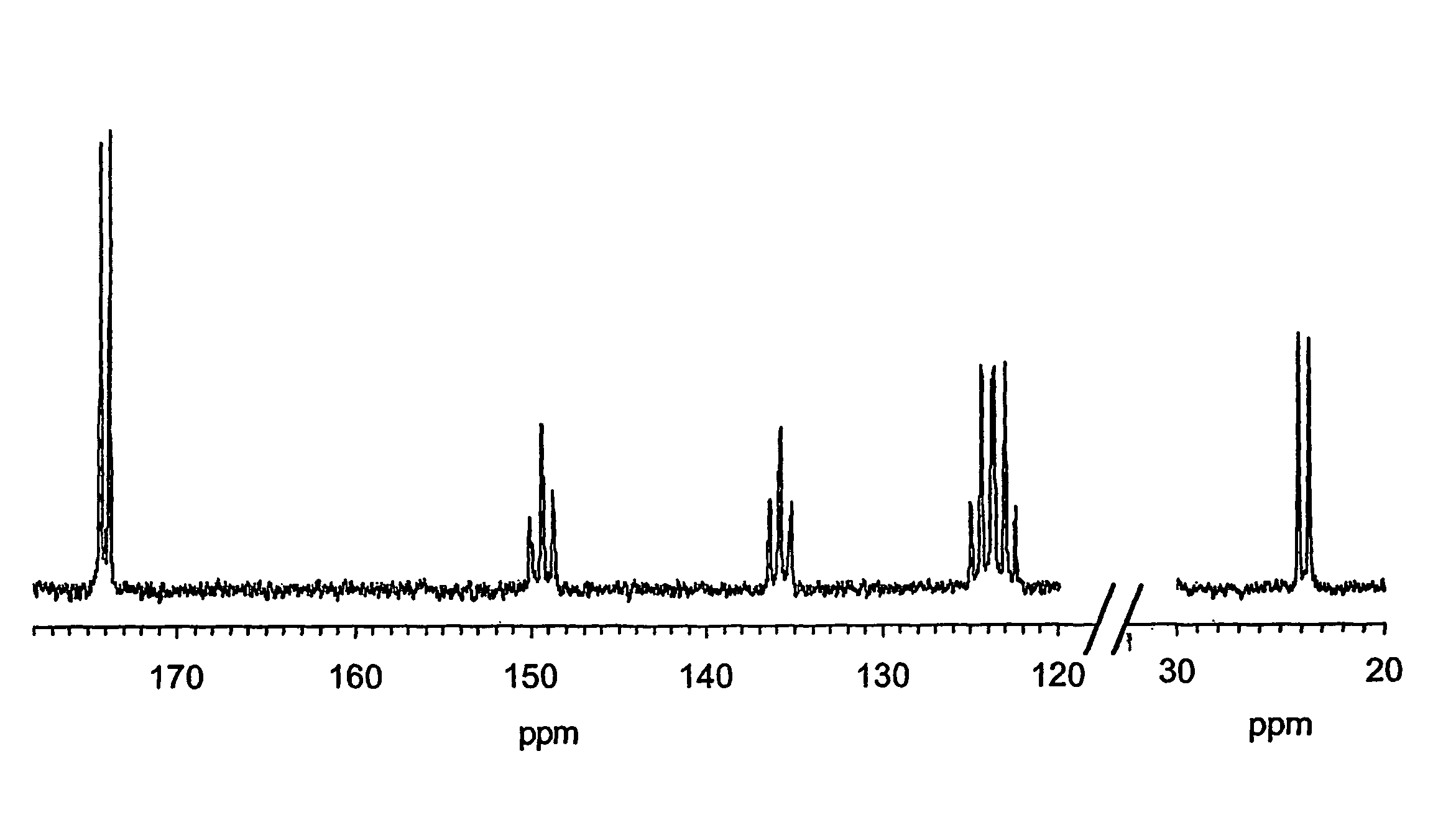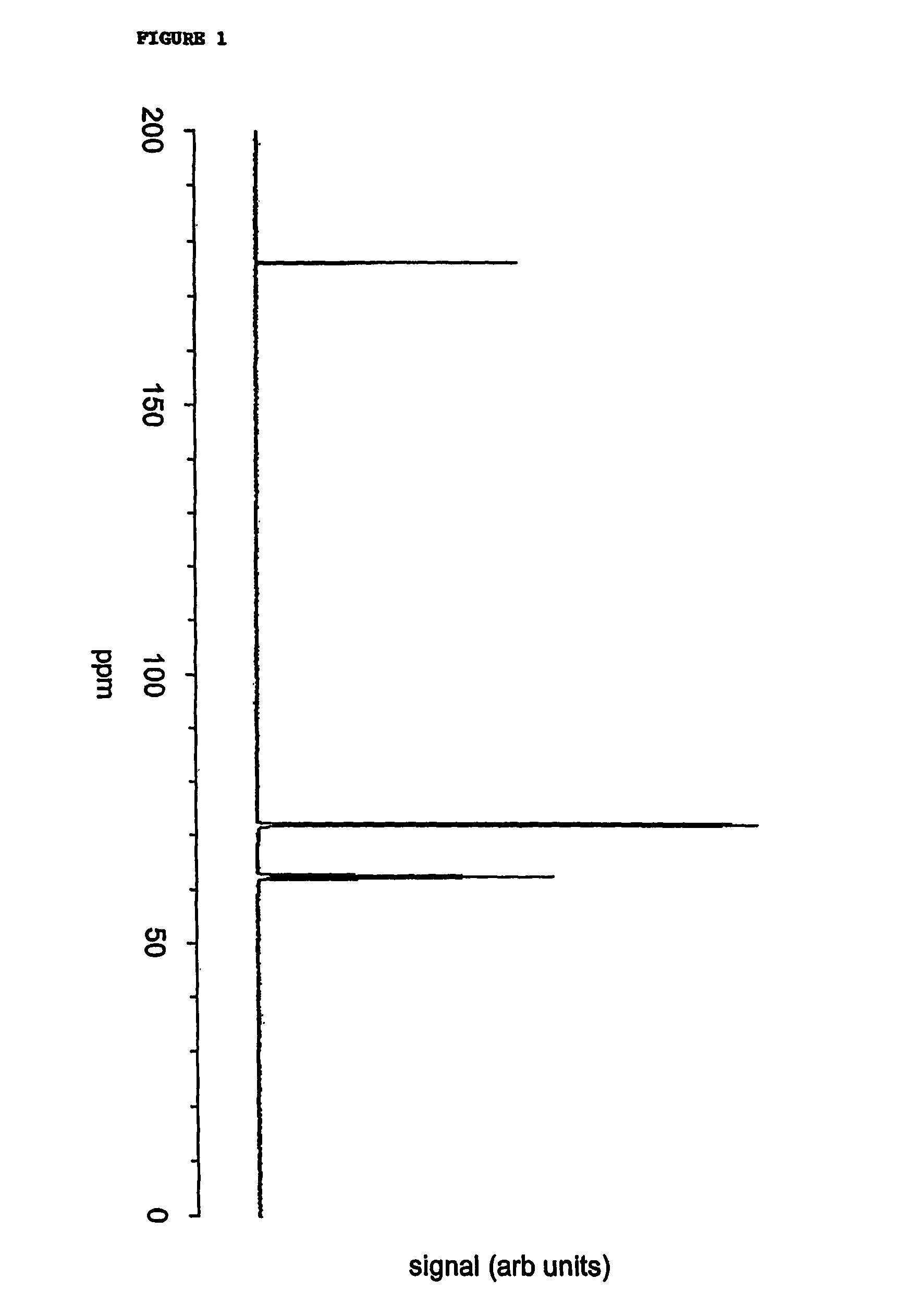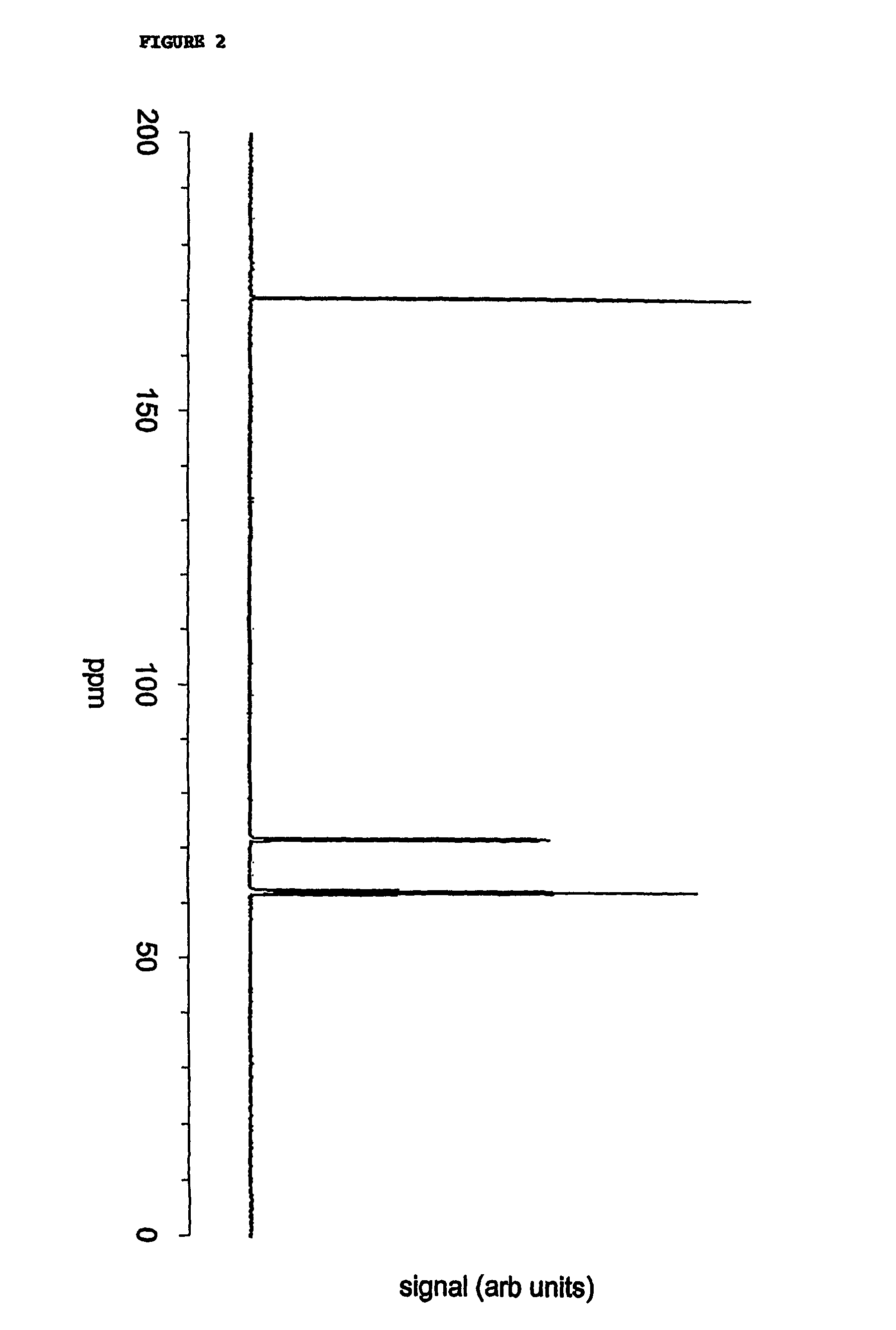Method for investigating the fate of a test compound or the stateof a biological system by means of NMR of hyperpolarised NMR active nuclei
a technology of active nuclei and nmr, which is applied in the field of nmr spectroscopy, can solve the problems of increasing pressure on both the efficacy and safety evaluation process, increasing the sensitivity of nmr, and being unable to characterise the structure of metabolites fully and unambiguously, so as to enhance the corresponding nmr or mri signal, enhance the nuclear polarisation of a noble gas, and increase the sensitivity of analysis
- Summary
- Abstract
- Description
- Claims
- Application Information
AI Technical Summary
Benefits of technology
Problems solved by technology
Method used
Image
Examples
example 1
Study of (13C-carboxyl) Benzoic Acid Isolated From Rat Urine.
[0109](13C-carboxyl) Benzoic acid was purchased from SIGMA / Aldrich chemical company. A sample was added to rat urine at approximately 5 mg per ml and then isolated by solid phase extraction (SPE) and reversed phase high performance liquid chromatography (RP hplc, C18 Kromasil, 25×1 cm, 5 μm) using gradient elution with formic acid in water and formic acid in methanol. The isolated material was then dried and an aliquot re-analysed by RP hplc indicating a purity of 94%, with the main component co-eluting with carrier material, monitored by on-line UV detection (at 254 nm) and yielding the expected (M—H)− ion at 122 mass units by on-line electrospray ionisation mass spectrometry (EI-MS).
[0110]A sample of (13C-carboxyl) benzoic acid (89 μg, 0.72 μmol) obtained as described above was dissolved in sodium deutoxide in D2O (0.4% W / v, 7.5 ul, approximately 1.5 equivalents) and D2O (7.5 μl). Trityl radical dissolved in glycerol-D8 ...
example 2
Study of (13C-carboxyl) Hippuric Acid (Primary Benzoic Acid Metabolite) Isolated from Rat Urine After iv Administration of (13C-carboxyl) Benzoic Acid.
Embodiment Without a Holding Field Magnet
[0116](13C-carboxyl) Benzoic acid was administered intravenously at 10 mg / Kg (at 0 and 2 hrs) to 4 anaesthetised rats; urine was collected from canulated urethra. The major metabolite (13C-carboxy) hippuric acid was isolated by SPE and RP-hplc. The isolated material was then dried and an aliquot re-analysed by RP hplc indicating a purity of 99%, with the main component co-eluting with authentic carrier material, monitored by on-line UV detection (at 254 nm) and yielding the expected (M−H)−ion at 179 mass units by on-line electrospray ionisation mass spectrometry (EI-MS).
[0117]A sample of (13C-carboxyl) hippuric acid (463 μg, 2.57 μmol) obtained as described above was dissolved in sodium deutoxide in D2O (0.4% W / v, 17.5 μl, approximately 0.97 equivalents). Trityl radical dissolved in glycerol-D8...
example 3
Study of (13C-carboxyl) Hippuric Acid (Benzoic Acid Metabolite) Isolated from Rat Urine After iv Administration of (13C-carboxyl Benzoic Acid.
Embodiment Utilising a Holding Magnet
[0119]A sample of (13C-carboxyl) hippuric acid (463 μg, 2.57 μmol) obtained as described above was dissolved sodium deutoxide in D2O (0.4% W / v, 17.5 μl, approximately 0.97 equivalents). Trityl radical dissolved in glycerol D8 (26 μl, 25 mM) was added to the hippuric acid solution and the subsequent cocktail was mixed to homogeneity with a disposable plastic pipette. The sample was rapidly frozen, as small droplets, by dripping via a fine plastic pipette into a liquid nitrogen bath. The frozen sample drops were collected using small tweezers and placed in a liquid nitrogen cooled Kel-F cup and this was transferred for sample polarisation. The sample was polarised for 4 hours at a magnetic field of 3.354T and at a microwave frequency of 93.925 GHz. Microwave power was 100 mW and sample temperature was maintai...
PUM
| Property | Measurement | Unit |
|---|---|---|
| temperature | aaaaa | aaaaa |
| magnetic field | aaaaa | aaaaa |
| temperature | aaaaa | aaaaa |
Abstract
Description
Claims
Application Information
 Login to View More
Login to View More - R&D
- Intellectual Property
- Life Sciences
- Materials
- Tech Scout
- Unparalleled Data Quality
- Higher Quality Content
- 60% Fewer Hallucinations
Browse by: Latest US Patents, China's latest patents, Technical Efficacy Thesaurus, Application Domain, Technology Topic, Popular Technical Reports.
© 2025 PatSnap. All rights reserved.Legal|Privacy policy|Modern Slavery Act Transparency Statement|Sitemap|About US| Contact US: help@patsnap.com



